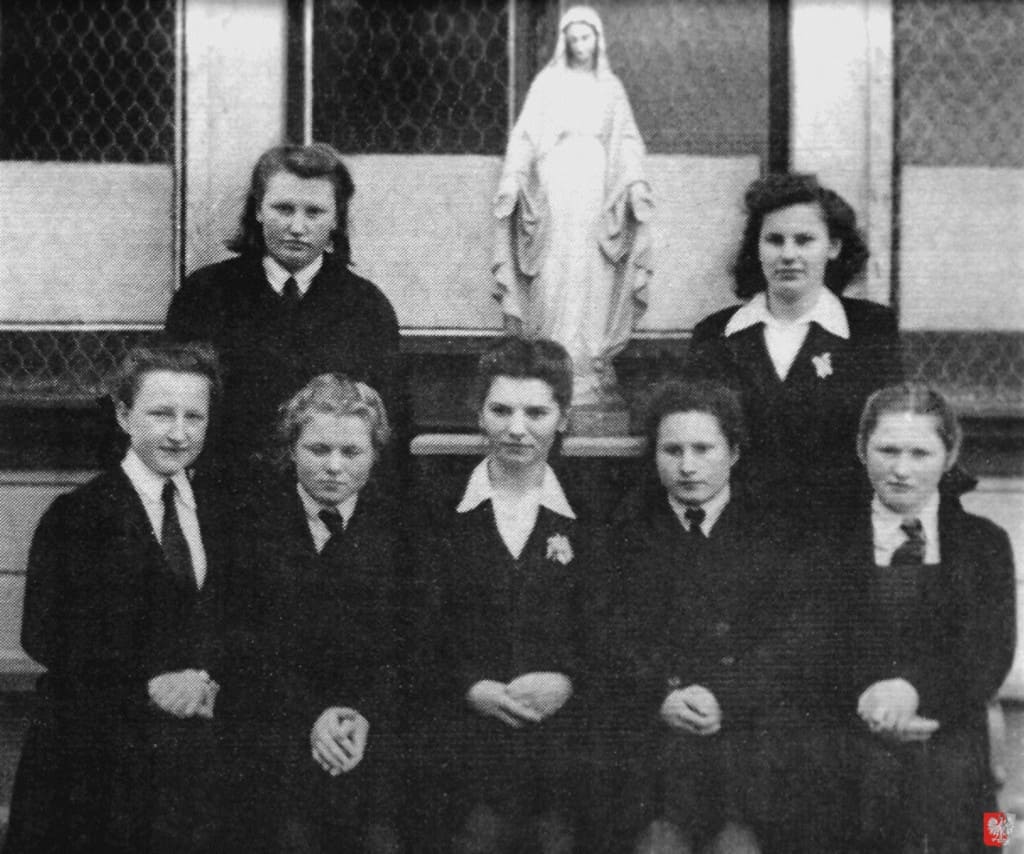Polish Refugees in New Zealand 1944-1951
Introduction
Exhibitions
Who Are We?
The ‘Polish Children’
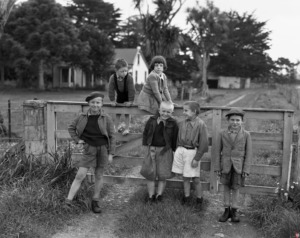 We are a group of children (734) – most of us were orphans or had only one living parent – and adults (105) invited to New Zealand by Prime Minister, Peter Fraser in 1943. We arrived in Wellington on 1 November 1944 on the General Randall an American troopship bringing New Zealand soldiers home on leave. We were taken to a camp at Pahiatua which had been specially set up for us. The Polish Children’s Camp, Pahiatua was our home for the next five years. For many of us those were the happiest years of our lives. At the end of the war we expected to return to Poland. But Poland was now part of a Soviet world; we were given the opportunity to make New Zealand our home. (p12)
We are a group of children (734) – most of us were orphans or had only one living parent – and adults (105) invited to New Zealand by Prime Minister, Peter Fraser in 1943. We arrived in Wellington on 1 November 1944 on the General Randall an American troopship bringing New Zealand soldiers home on leave. We were taken to a camp at Pahiatua which had been specially set up for us. The Polish Children’s Camp, Pahiatua was our home for the next five years. For many of us those were the happiest years of our lives. At the end of the war we expected to return to Poland. But Poland was now part of a Soviet world; we were given the opportunity to make New Zealand our home. (p12)
The Ex-Servicemen
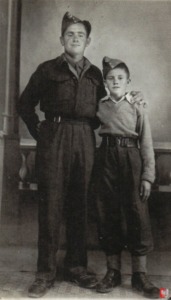 We are a group (200) of mostly fathers and relatives of the children in Pahiatua camp who found ourselves fighting alongside the western Allies during the war. Some of us were part of a Polish army, formed in the Soviet Union after Germany attacked Russia, which was evacuated to the Middle East in 1942. Others of us managed to escape after Poland was invaded by the Wehrmacht and the Red Army, in September 1939. Rather than return to a country dominated by our enemy, we chose to fight for Polish independence in exile. (p13)
We are a group (200) of mostly fathers and relatives of the children in Pahiatua camp who found ourselves fighting alongside the western Allies during the war. Some of us were part of a Polish army, formed in the Soviet Union after Germany attacked Russia, which was evacuated to the Middle East in 1942. Others of us managed to escape after Poland was invaded by the Wehrmacht and the Red Army, in September 1939. Rather than return to a country dominated by our enemy, we chose to fight for Polish independence in exile. (p13)
The Displaced Person
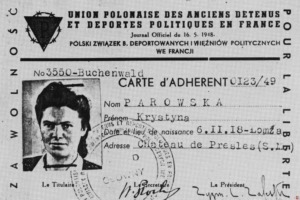 We are a group of Poles (744) who found ourselves in Germany** at the end of the war. We spent the war in concentration camps, prisoner-of-war (POW) camps and forced labour camps. Many of us waited in Germany after the war hoping that we could return to an independent Poland. Finally we too had to accept exile in a foreign country. New Zealand belonged to the International Refugee Organisation which settled Displaced Persons (DPs). Between 1949 and 1951, 4500 DPs of many nationalities came to New Zealand on the Dundalk Bay, Hellenic Prince, and Goya. As New Settlers, we were obliged to work for the government for several years to discharge our debts. (p14)
We are a group of Poles (744) who found ourselves in Germany** at the end of the war. We spent the war in concentration camps, prisoner-of-war (POW) camps and forced labour camps. Many of us waited in Germany after the war hoping that we could return to an independent Poland. Finally we too had to accept exile in a foreign country. New Zealand belonged to the International Refugee Organisation which settled Displaced Persons (DPs). Between 1949 and 1951, 4500 DPs of many nationalities came to New Zealand on the Dundalk Bay, Hellenic Prince, and Goya. As New Settlers, we were obliged to work for the government for several years to discharge our debts. (p14)
Editors notes 1 and 2
1 Displaced Persons found themselves in various European countries including Italy, Austria, Czechoslovakia and France.
2 Minor changes have been made to the text to clarify meanings. All changes have been agreed by Dr. Theresa Sawicka.
Petone Settler’s Museum; Living in Two Worlds, The Polish Community of Wellington; p11, 12, 13, 14
Where did we come from?
World War II
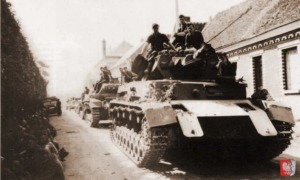 The Tidal wave of war carried the post-war Polish migrants to New Zealand. The German army invaded Poland from the west on September 1939, the Red Army entered Poland’s eastern borderlands on 17 September 1939. The Soviets and Nazis divided Poland almost equally in half according to the Soviet German Pact of Non-Aggression. Life for the Poles in both parts was grim. Between 1939 and 1941, 1.25 million Poles were deported from Soviet-occupied Poland and 2.5 million from German occupied Poland.
The Tidal wave of war carried the post-war Polish migrants to New Zealand. The German army invaded Poland from the west on September 1939, the Red Army entered Poland’s eastern borderlands on 17 September 1939. The Soviets and Nazis divided Poland almost equally in half according to the Soviet German Pact of Non-Aggression. Life for the Poles in both parts was grim. Between 1939 and 1941, 1.25 million Poles were deported from Soviet-occupied Poland and 2.5 million from German occupied Poland.
The journey of the Polish Children and some of the ex-Servicemen begins with deportation from the eastern borderlands. The journey of the DPs and those soldiers made POWs by the German invasion begins in the west.
Eastern Journeys
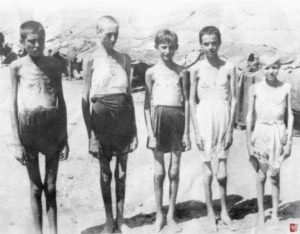 In the period between the Red Army’s invasion of Poland and the German attack on Russia, approximately 1.25 million people were deported from eastern Poland (today western Ukraine and western Byelorussia) to mines, labour camps and prisons deep in the interior of the Soviet Union. They survived horrifying journeys in cattle trains with little sanitation, food or water; months of hard labour on poor rations; and cold arctic winters with inadequate shelter and insufficient clothing.
In the period between the Red Army’s invasion of Poland and the German attack on Russia, approximately 1.25 million people were deported from eastern Poland (today western Ukraine and western Byelorussia) to mines, labour camps and prisons deep in the interior of the Soviet Union. They survived horrifying journeys in cattle trains with little sanitation, food or water; months of hard labour on poor rations; and cold arctic winters with inadequate shelter and insufficient clothing.
After Germany attacked the Soviet Union in 1941, Poles imprisoned in the Soviet Union were granted an ‘amnesty’ and a Polish army was formed. This army gathered in the southern Soviet Republics and was evacuated to the Middle East in 1942. Many civilians were evacuated with it. The Polish Children and their caregivers were a surviving fragment of this mass deportation of Polish citizens.
Western Journeys
 Of the 2.5 million victims of German deportations, 1.5 million were sent from western Poland (soon to become part of the Reich ) to central Poland (which became the General-Gouvernement) and abandoned. Large number of Poles were sent to forced labour camps in the Reich, or forced to work on German farms and in munition factories. Many were sent to concentration camps, the survivors being transferred westwards as the Russians advanced. Polish military POWs were held by the Wehrmacht until the end of the war.
Of the 2.5 million victims of German deportations, 1.5 million were sent from western Poland (soon to become part of the Reich ) to central Poland (which became the General-Gouvernement) and abandoned. Large number of Poles were sent to forced labour camps in the Reich, or forced to work on German farms and in munition factories. Many were sent to concentration camps, the survivors being transferred westwards as the Russians advanced. Polish military POWs were held by the Wehrmacht until the end of the war.
Those Poles who became DPs at the end of the war, had spent the war years in forced labour or POW camps in Germany, or had sought to escape westwards at the end of the war. For some, this meant ten years of life in camps first as prisoners, then as DPs. When the International Refugee Organisation wound up its operations, DPs had to find homes in other countries.
Petone Settlers Museum; Living in Two Worlds, The Polish Community of Wellington; p11-20
Timeline
– On 31 October 1944, 733 children and 105 staff arrive in Wellington on board the USS General Randall.
– The Polish children’s camp is settled on 1 November 1944 and remains in operation until 15 April 1949.
– In response to the installation of a proSoviet communist government in Poland in February 1945, the New Zealand government welcomes the refugees to remain permanently in New Zealand. A small group of adults and children return to Poland.
– From 1945, the children begin leaving the camp for secondary schools or trades.
– Polish High School at Pahiatua closes in August 1946.
– The Polish Boys Hostel in Island Bay, Wellington is established in 6 May 1946.
– The Polish Girls Hostel in Lyall Bay, Wellington is established in 8 December 1947.
– From 1947 to 1949 Polish exservicemen and women related to the children and adults from Pahiatua settle in New Zealand.
– From August 1948, the remaining girls are moved to foster care or to the Polish Girls Hostel in Lyall Bay, Wellington
– The Polish Association in New Zealand based in Wellington is established in 1948 and the first Polish House in Wellington is bought in 1951.
The Pahiatua Polish Children’s Camp closes in February 1949 and is renamed the Pahiatua Reception and Training Centre. It is readied for Displaced Person (DPs) from Europe.
– The remaining youngest boys attend local schools close to Pahiatua for the first term of 1949 and permanently leave Pahiatua Camp in April 1949. After a three month stay at Linton Army Camp in Palmerston North they are transferred to the Hawera Boys Hostel in August 1949
– The Pahiatua Reception and Training Centre accept its first draft of Displaced Persons in June 1949.
– From June 1949 to 1951, New Zealand accepts approximately 4,500 Displaced Persons (DPs) from Europe. There are 744 Poles in this group.
Commentary
Acknowledgements
The New Zealand Museum Gallery Room “Polish Refugees in New Zealand – Deportees Forcibly Taken to Siberia, Ex-Servicemen and Displaced Persons” was created by a workgroup from Wellington, New Zealand under the umbrella of the Kresy-Siberia Foundation. The group was led by Irena Lowe (Smolnicki), and assisted by Dr.Theresa Sawicka, Wesław Wernicki, Jackie Rzepka, Adam Manterys and Mary-Anne Morgan (Baziuk).
Theresa and Wesław have provided the team with professional assistance in the field of history. Irena, Jackie, Adam and Mary-Anne are all first generation New Zealanders and descendants of family members forcibly deported from Kresy during World War II, who subsequently came to New Zealand either as children bound for Pahiatua Children’s Camp, or as ex-servicemen and women or displaced persons.
We also acknowledge all those Pahiatua children and adults, ex-servicemen and women, displaced persons and New Zealanders who have written about their own or their family’s experiences in books and journals and provided a wonderful history in text, photos and documents over many decades. The team has not set out to rewrite the history but rather to collate the existing stories in a structure so that the interested readers and the following generations can access the stories on-line and view the history as a mosaic. We are humbled by their experiences.
We are grateful to our sponsors who have enabled the publication of this gallery.

Stowarzyszenie Polskich Kombatantów SPK (Polish Ex-Servicemen’s Association)
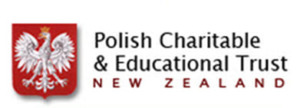
Polish Charitable and Educational Trust New Zealand
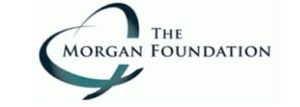
The Morgan Foundation

Dr Zbigniew Popławski – in memory of the Popławski family
Andy and Anthony Bogacki – in memory of the Bogacki and Zielinski family
Eugenia Smolnicka – in memory of Michał and Antonina Piotuch
Jackie Rzepka – in memory of the Rzepka family
Steve Witkowski – in memory of the Witkowski family
Bibliography
Sources
Alexandrowicz, S.Monica 1998. “Z Lubcza na Antypody“. Seria: Ocalić od zapomnienia -1. Zgromadzenie Siótr Urszulanek SJK.
Beaupré-Stankiewicz, Irena, Danuta Waszczuk-Kamieniecka, and Jadwiga Lewicka-Howells. 1989. Isfahan – City of Polish Children. 3rd ed. London: Association of Former Pupils of Polish Schools, Isfahan and Lebanon.
Beaupré-Stankiewicz, Irena, Danuta Waszczuk-Kamieniecka, and Jadwiga Lewicka-Howells. 1987. Isfahan – Miasto Polskich Dzieci. 1st ed. London: Kolo Wychowanków Szkól Polskich, Isfahan i Liban.
Chibowski, Ks. Andrzej. 2012. Kapłańska Odyseja Ząbki. Original language edition. Polska: Apostolicum.
Chibowski, Dr. Andrzej. 2013. A Priest’s Odyssey. 1st English- language edition. Wellington, New Zealand: Future Publishing.
Dabrowski, Stanislaw. 2011. Seeds in the Storm. Waikanae, NZ: Maurienne House.
Ducat, Michelle, Mealing, David, Sawicka Theresa, and Petone Settlers Museum. 1992. Living in Two Worlds: The Polish Community of Wellington Wellington: Petone Settlers Museum/Te Whare Whakaaro o Pito-one
Jagiello, Józef. 2005. One Man’s Odyssey. Edition 2005. Józef Jagiello.
Department of Labour, New Zealand Immigration Service. 1994. Refugee Women: The New Zealand Refugee Quota Programme. Wellington: Department of Labour, New Zealand Immigration Service.
Lowrie Meryl. 1981 The Geneva Connection, Red Cross in New Zealand. Wellington: New Zealand Red Cross Society.
Manterys, Adam, Stefania Zawada, Stanislaw Manterys, and Józef Zawada. 2008. New Zealand’s First Refugees: Pahiatua’s Polish Children (2nd ed.). Wellington: Polish Children’s Reunion Committee.
Manterys, Adam, Stefania Zawada, Stanislaw Manterys, and Józef Zawada. 2012. New Zealand’s First Refugees: Pahiatua’s Polish Children (3rd ed.). Wellington: Polish Children’s Reunion Committee.
Manterys, Adam, Stefania Zawada, Stanislaw Manterys, and Józef Zawada. 2006. Dwie Ojczyzny: Polskie dzieci w Nowaj Zelandii Tułacze wspomnienia. Warszawa: Społeczny Zespól Wydania Książki o Polskich Dzieciach w Nowej Zelandii.
New Zealand Education Deptment. 1945. “Polish Children in New Zealand.” New Zealand School Journal, 1937-vol. 39 No 5, Part III:147-152.
Polish Women’s League. 1991. Wiązanka myśli i wspomnie / Koło Polek = A Bouquet of thoughts and reminiscences. Wellington, N.Z.: The League.
Rodgers, Owen. 2011. Adventure Unlimited – 100 years of Scouting in New Zealand 1908-2005. Wellington: Scout Association of New Zealand.
Ronayne Chris. 2002. Rudi Gopas – a biography. David Ling Publishing Limited.
Skwarko, Krystyna. 1972. Osiedlenie Młodzieży Polskiej w Nowej Zelandii w r. 1944. Londyn, Poets’ and Painters’ Press.
Skwarko, Krystyna. 1974. The Invited. Wellington: Millwood Press.
Spławska, Władysława Seweryn. 1993. Harcerki w Zwiądzku Harcerstwa Polskiego: Poczatki i Osiągnięcia w Kraju oraz 1939-1949 poza Krajem. Głowna Kwatera Harcerek ZHP poza Krajem.
Suchanski, Alina. 2006. Polish Kiwis: Pictures from an Exhibition. Christchurch: Alina Suchanski.
Suchanski, Alina. 2012. Alone : an inspiring story of survival and determination. Te Anau, N.Z.: A. Suchanski.
van der Linden, Maria. 1994. An Unforgettable Journey. Second Revised ed. Palmerston North: Dunmore Press.
Tomaszyk, Krystine. 2004. Essence. Palmerston North: Dunmore Press.
Tomaszyk, Krystyna. 2009a. Droga i Pamięć: Przez Syberie na Antypody. Warszawa: Wydawnictwo Trio.
Zdziech, Dariusz. 2007. Pahiatua – “Mała Polska” małych Polaków. “Societas Vistulana” .
Other Books
Beck, Jennifer, and Lindy Fisher. 2007. Stefania’s Dancing Slippers. Auckland: Scholastic New Zealand. [Children’s Book]
Domanski, Witold (Vic). 2011. A New Tomorrow: A story of a Polish-Kiwi family. Masterton, NZ: Tararua Publishing.
Jaworowska, Mirosława. 2011. Golgota i Wybawienie: Dzieci Pahiatua od Syberii do Nowej Zelandii – Cztery Pory Roku jak Cztery Pory Życia Warszawa: Studio Jeden.
Kałuski, Marian. 2006. Polacy w Nowej Zelandii. Toruń, Poland: Oficyna Wydawnicza Kucharski.
Lochore, R. A. 1951. From Europe to New Zealand: An Account of our Continental European Settlers. Wellington: A. H. & A. W. Reed in conjunction with the New Zealand Institute of International Affairs.
Lubelski, Katolicki Uniwersytet. 2007. Z Sybiru na drugą półkulę : wojenne losy Polskich dzieci z Pahiatua. Lublin: Wydawn. KUL.
Pobóg-Jaworowski, J. W. 1990. History of the Polish settlers in New Zealand, 1776-1987. Warsaw: CHZ Ars Polona.
Ogonowska-Coates, Halina. 2008. Krystyna’s Story: A Polish refugees journey. Dunedin: Longacre Press.
Roy-Wojciechowski, John, and Allan Parker. 2004. A Strange Outcome: The Remarkable Survival Story of a Polish Child. Auckland: Penguin Books.
Szymanik, Melinda. 2013. One Winter’s Day in 1939. Auckland: Scholastic. [Children’s Book]
Turol, Sophia. 2010. Sophia’s Challenging Journey: Self-published.
Wiśniewska-Brow, Helena. Give Us This Day. Victoria University Press.
Other Materials
CraftInc. Films. 2015. Polish Children of Pahiatua. 70th Reunion – HD. Wellington: CraftInc Films. Produced by Wanda Lepionka and David Strong. [Film].
Gillis, Willie Mae. 1954. The Poles in Wellington, New Zealand. Edited by Department of Psychology. Vol. No. 5 Publications in Psychology. Wellington: Victoria University College. [Research]
Krystman-Ostrowski, Teresa Marja. 1975. The Socio-Political Characteristics of Polish Immigrants in Two New Zealand Communities, Department of Politics, University of Waikato, Hamilton. [Thesis]
National Film Unit. 1944. Weekly Review 169. Wellington: National Film Unit.
O’Brien, Kathleen. 1966. The Story of Seven-Hundred Polish Children. Wellington: New Zealand National Film Unit. [Film]
Ogonowska-Coates, John Anderson in collaboration with Halina. 1996. Exiles: The Story of a Polish Journey. Wellington: Ace of Hearts Production in Association with Polish Television. [Film]
Sawicka-Brockie, Theresa. 1987. Forsaken Journeys, Department of Anthropology, Auckland University, Auckland. [PhD Thesis]
Stowarzyszenie Polaków w Christchurch. 2004. Poles Apart: Historia 733 Polskich Sierot. Christchurch: Canterbury Telivision (CTV). [Film]
Tomaszyk, Krystyna. 2009b. The Story of the Polish Children in Isfahan – Iran 1942-1944. [DVD]
Indexes Of Names
Dundalk Bay – Ship carrying Displaced Persons to New Zealand
Goya Voyage 2 – Ship carrying Displaced Persons to New Zealand
Goya Voyage 3 – Ship carrying Displaced Persons to New Zealand
Orphanage – Pahiatua – New Zealand
S.S. “RANGITIKI” – Ship carrying ex-servicemen related to Pahiatua orphans to New Zealand
SS Hellenic Prince – Ship carrying Displaced Persons to New Zealand
Contact
Kresy-Siberia (New Zealand)
PO Box 853 Wellington 6140 New Zealand
e-mail: NZ@Kresy-Siberia.org


